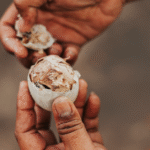“True greatness is not just in discovery but in honoring those who made it possible. Giving credit where credit is due is the mark of a just and grateful society.”
PRAGUE – Filipinos are known worldwide for our hardworking nature. Thanks to our overseas workers and professionals, we are celebrated for our grit, resilience, and intelligence worldwide. Yet, one remarkable story remains largely untold, the story of a Filipino scientist who played a crucial role in developing Erythromycin, an antibiotic that has saved millions of lives. If you’re allergic to penicillin, you have him to thank!
Erythromycin is a powerful antibiotic used to treat a variety of infections. According to the NHS UK, it is commonly prescribed for pneumonia, skin conditions like acne, and sexually transmitted infections such as chlamydia. It is also used in children to treat ear infections. Erythromycin is available in multiple forms, including capsules, topical applications, and intravenous (IV) administration. Widely recognized brand names include Erythromax, Erythrocin, Erythroped, and Erymax, all known for effectively treating pneumonia, bronchitis, and skin infections.
Known to few, Dr. Abelardo Aguilar was a key figure in the development of Erythromicin. And even to this day, he never received a recognition or compensation for his work.

Where it all began
Like any great story, it begins with: Once upon a time, a boy named Abelardo Aguilar was born on November 3, 1917, in Barotac Nuevo, Iloilo, Philippines. Growing up in a humble family, he was inspired by his pharmacist father to pursue a career in medicine. After earning his degree from the University of Santo Tomas, he secured a job as a research assistant at Eli Lilly’s laboratory in Manila in 1949, a decision that would later change the course of medical history.1
The Discovery
Aguilar’s work at Eli Lilly was pivotal, as he was tasked with searching for new antibiotics during a time when existing treatments were becoming less effective due to antibiotic resistance. His dedication and research ultimately led to the identification of Saccharopolyspora erythraea, which produced erythromycin.2
In 1949, Dr. Aguilar identified a strain of bacteria while analyzing soil samples from his own lawn. Labeled with the code number 12559 by the company, his discovery was one of thousands of soil samples submitted for testing. On June 28, 1952, John H. Blair, the Far East District Manager of Eli Lilly, issued a memorandum to all medical service representatives, announcing the discovery as the “source of a new antibiotic.”
Patent & Intellectual Property Rights (IPR)
Let’s delve into Patents and Intellectual Property Rights (IPR)—an important topic closely related to Dr. Aguilar’s story and one that everyone should be aware of.
A patent is a legal right granted to an inventor, providing exclusive control over the making, using, or selling of their invention for a limited time, typically 20 years. This exclusivity allows inventors to protect their innovations and potentially benefit financially from them.3
Intellectual property rights (IPR) encompass legal protections for creations of the mind, including inventions, literary and artistic works, designs, symbols, names, and images used in commerce. These rights enable creators to control and profit from their intellectual endeavors.4
Dr. Aguilar’s discovery of erythromycin is closely tied to issues of patent rights and intellectual property. After isolating the antibiotic from soil samples, Aguilar provided his findings to Eli Lilly. The company subsequently filed for patent protection for erythromycin, which was granted in 1953, allowing them to commercialize the drug under the brand name Ilosone (of its Iloilo origins) in 1952.
Broken Promises
In 1956, Dr. Aguilar reportedly wrote a letter to the Eli Lilly president, requesting some form of recognition, such as a trip to the company’s manufacturing plant in Indianapolis, USA. However, his request was never granted.
Despite this, Dr. Aguilar remained dedicated to his medical profession, eventually leaving Eli Lilly to establish his private practice in Iloilo City. He became known as the “doctor of the poor”, consistently showing compassion to his patients, many of whom could not afford to pay for medical services.
For years, he tirelessly sought rightful compensation from Eli Lilly, but his efforts were in vain. Even on his deathbed, he entrusted his only daughter, Maria Elena Aguilar-Paguntalan, with the mission to continue his fight for the recognition and compensation he rightfully deserved.
Post death
Several media organizations took interest into the story. Even some government officials in the Philippines got involved prompting a response from Elli Lilly Director of Eli Lilly’s International Corporate Affairs. John North.
In his response, North dismissed Paguntalan’s pursuit of her father’s rightful recognition, calling it an “unusual compensation request.” He further stated, “No company employee involved with the research and development of any compound, regardless of where they are employed in our global organization, receives royalties or compensation for that work beyond his or her salary and benefits. This policy was in effect during the time your father was an employee of our company, and it is still in effect today.”
The letter effectively shut down any hope for posthumous recognition or compensation for Dr. Aguilar’s groundbreaking contribution to the discovery of erythromycin.
An Ode to the Filipinos
The battle of Dr. Abelardo Aguilar is just one of many untold stories of Filipino innovators whose contributions have been overlooked, unrecognized, or taken advantage of. His struggle for rightful recognition and compensation serves as a painful reminder of how Filipino brilliance has often been exploited by larger institutions—with little to no reward for the very minds that drive innovation.
This is a heartbreaking lesson for Filipinos: Without strong legal protections, awareness, and advocacy, our brightest minds risk being forgotten or denied the credit they deserve. Dr. Aguilar’s story urges us to fight for our intellectual rights, value our own talents, and push for a system that safeguards and honors Filipino contributions—not just in science, but in all fields.
May his struggle inspire future generations to claim what is rightfully theirs, so that no Filipino genius goes unrecognized again.
Mabuhay ang iyong likha, Dr. Abelardo Aguilar!
REFERENCES:
- Ateneo Box. (2023, February 24). From Ilonggo soil to medicine cabinets: The untold story of Erythromycin. Retrieved [insert access date], from https://ateneoboxsite.wordpress.com/2023/02/24/from-ilonggo-soil-to-medicine-cabinets-the-untold-story-of-erythromycin/ ↩︎
- Kollective Hustle. (n.d). Remarkable Filipino scientists and their inventions you need to know. Retrieved [2025, February 20], from https://www.kollectivehustle.com/blog/remarkable-filipino-scientists-and-their-inventions-you-need-to-know ↩︎
- Wikipedia contributors. (n.d.). Patent. Wikipedia, The Free Encyclopedia. Retrieved [insert access date], from https://en.wikipedia.org/wiki/Patent ↩︎
- World Intellectual Property Organization (WIPO). (n.d.). What is intellectual property? Retrieved [insert access date], from https://www.wipo.int/about-ip/en/ ↩︎











